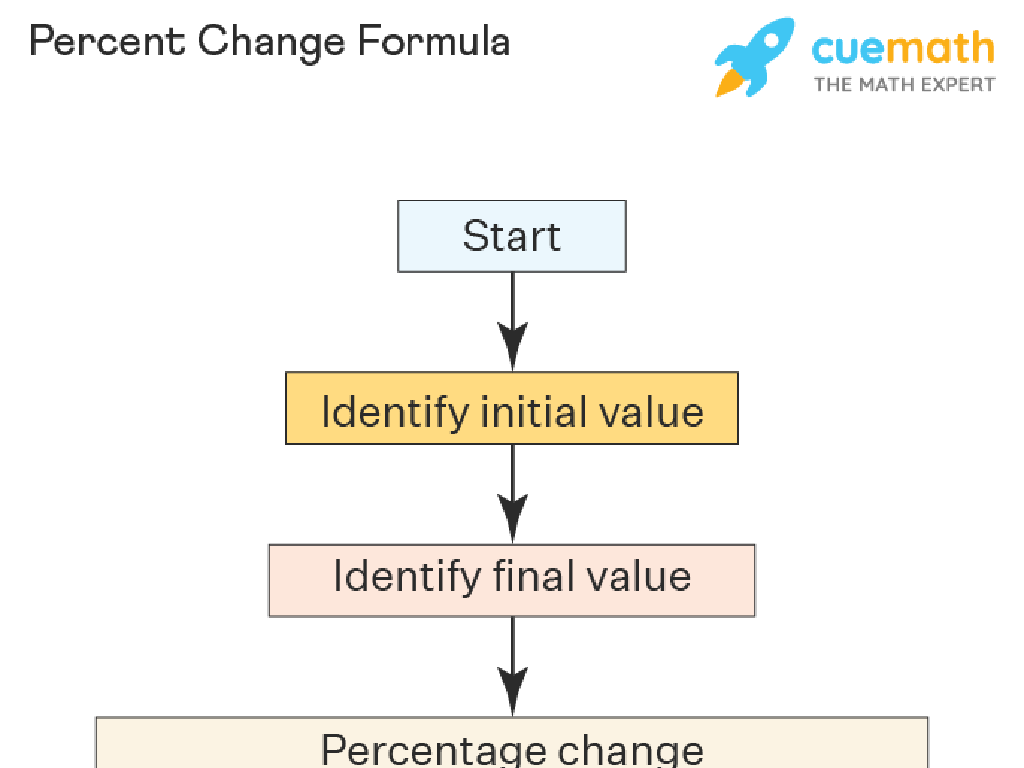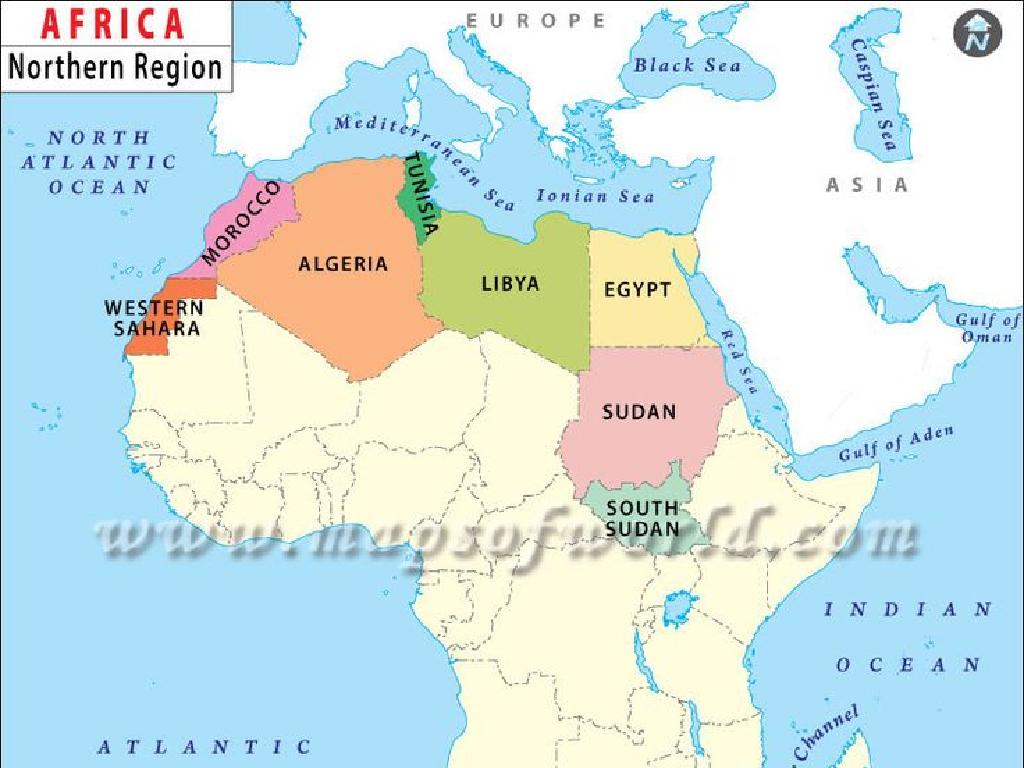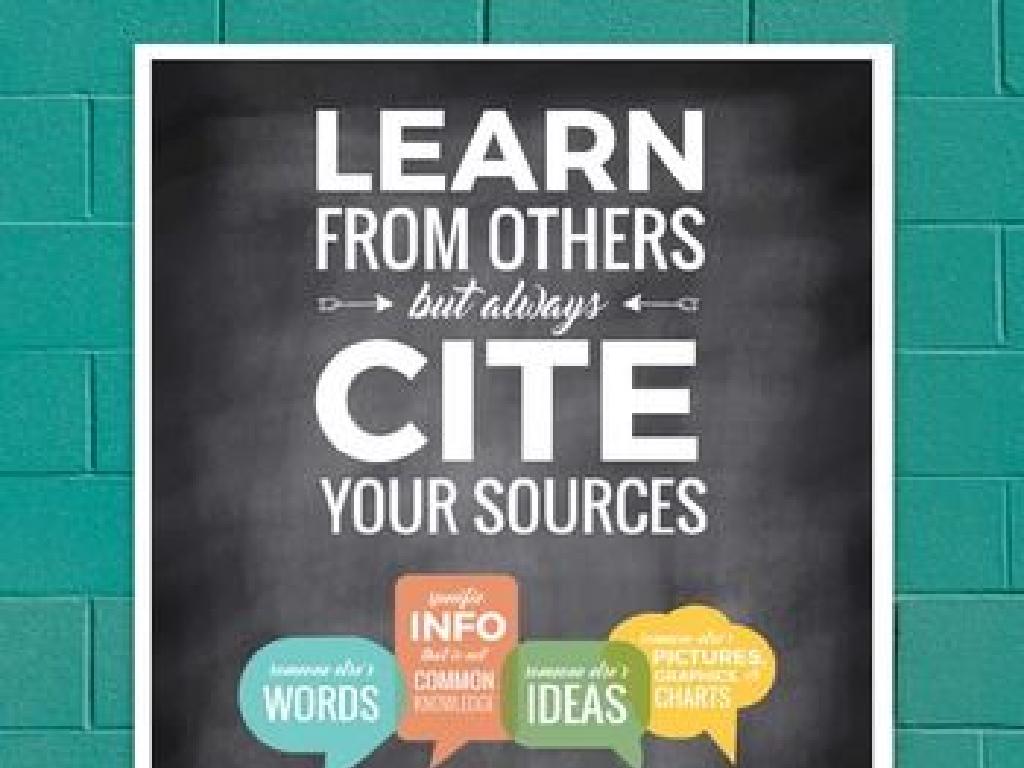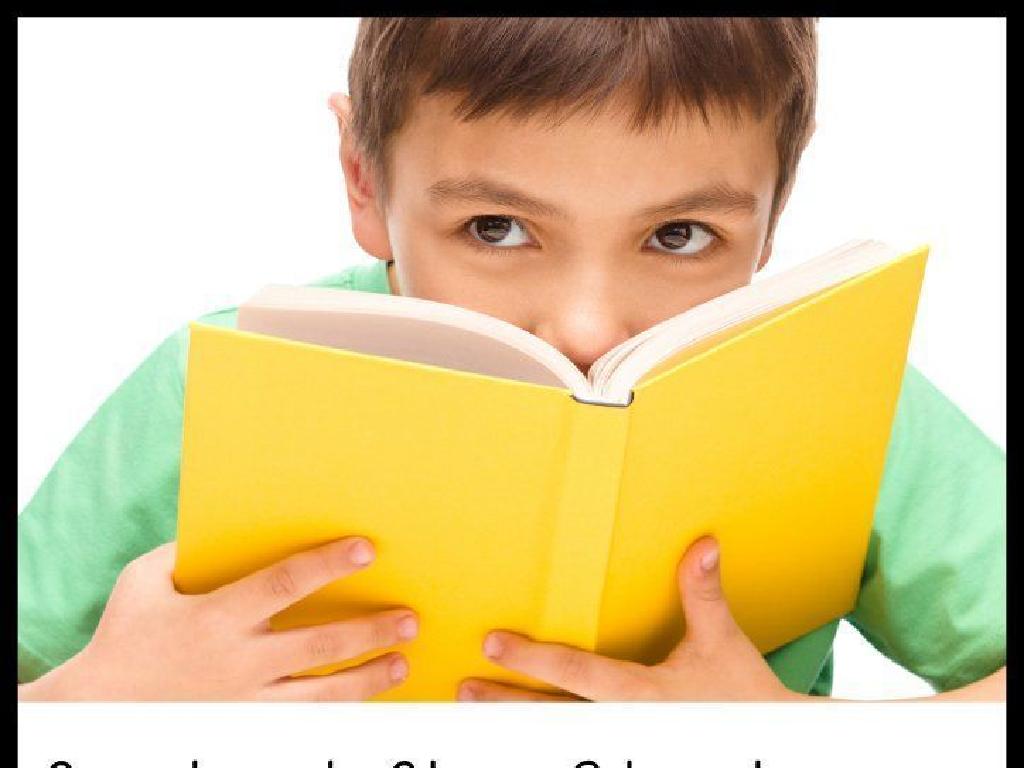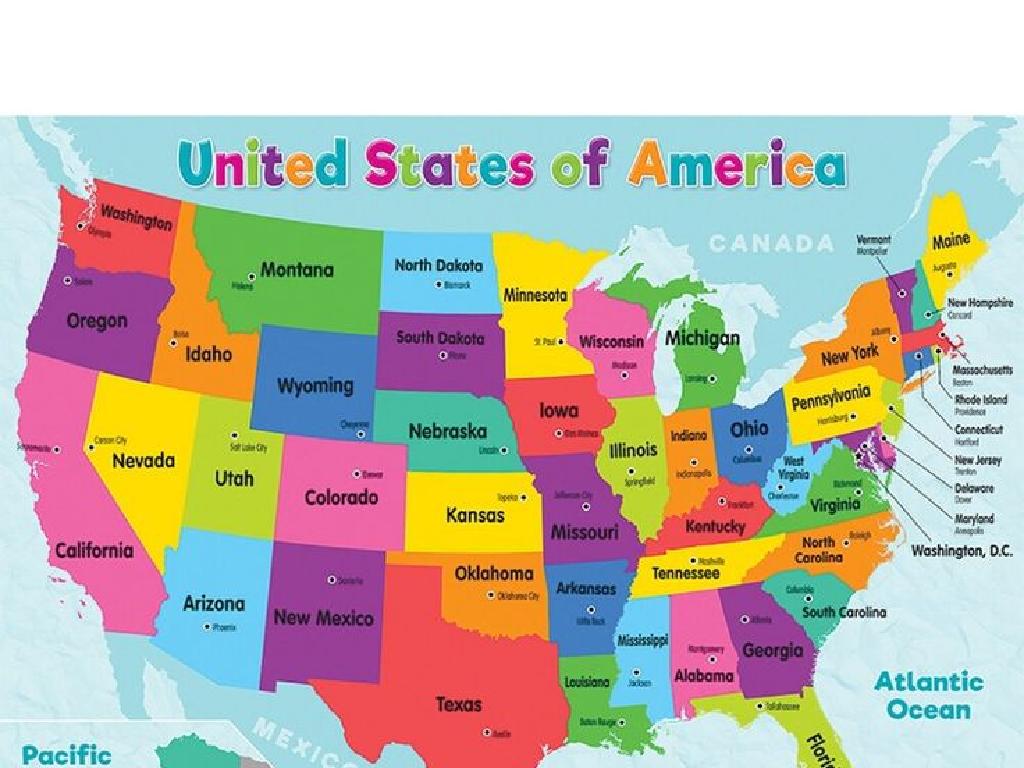Choose The Word That Matches The Picture: -Ss, -Ll, -Ff, -Zz, -Ck
Subject: Language arts
Grade: Kindergarten
Topic: Consonant Blends And Digraphs
Please LOG IN to download the presentation. Access is available to registered users only.
View More Content
Matching Sounds with Pictures!
– Play a matching game
– Learn special sounds: -ss, -ll, -ff, -zz, -ck
– Like ‘ss’ in ‘grass’ or ‘ll’ in ‘ball’
– Sounds stick together in words
– These pairs are always found together in words
– Match sounds to pictures
– Find the sound that matches the picture shown
|
This slide introduces a fun matching game to help Kindergarten students recognize and learn consonant blends and digraphs. The special sounds -ss, -ll, -ff, -zz, and -ck are pairs of letters that often come together in words, and they make unique sounds. Use pictures that clearly illustrate words containing these sounds, such as ‘grass’ for -ss or ‘bell’ for -ll. Encourage the children to say the words out loud to become familiar with the sounds. For the activity, have various pictures available and ask the students to choose the word that matches the picture from a selection of words with different consonant blends and digraphs. This will help them associate the sounds with the letters and improve their reading skills.
Meet the Letter Friends
– Letters make special sounds together
– ‘Blends’ and ‘digraphs’ introduction
– Blends are two letters that are pronounced together with each letter keeping its sound.
– Meet the friends: -ss, -ll, -ff, -zz, -ck
– Digraphs are two letters that make one sound, like ‘sh’ in ‘ship’.
– Match words with pictures
– Examples: ‘ss’ as in ‘dress’, ‘ll’ as in ‘bell’, ‘ff’ as in ‘cliff’, ‘zz’ as in ‘buzz’, and ‘ck’ as in ‘duck’.
|
This slide introduces Kindergarten students to the concept of consonant blends and digraphs, which are combinations of letters that produce unique sounds. Explain that some letters, like best friends, stick together to create these sounds. Use visual aids like pictures of a dress, bell, cliff, buzz, and duck to help students connect the sounds to familiar objects. During the activity, students will practice matching words containing these blends and digraphs with corresponding pictures, reinforcing their understanding of the letter combinations and their sounds. Encourage students to think of other words they know that include these letter friends.
The Sound of -ss: Hissing Snakes
– The -ss sound mimics a snake
– Think of the sound a snake makes: Sssss!
– Practice hissing like a snake
– Identify -ss in words
– Look at pictures and match them to words with -ss
– Examples: dress, grass, miss
– ‘dress’ as in a clothing item, ‘grass’ on the ground, ‘miss’ as in missing someone
|
This slide is designed to help Kindergarten students recognize and practice the -ss consonant digraph, which makes a hissing sound similar to a snake. Start by engaging the children with the concept of hissing like a snake, making it interactive and fun. Then, show them how this sound is represented in writing with the -ss digraph. Provide clear examples of words that contain the -ss sound and use pictures to help them connect the sound to the words. Encourage the students to practice saying the words out loud and to come up with other words that have the same sound. The activity should be playful and aimed at reinforcing their ability to identify the -ss sound in different words.
The Sound of -ll
– The -ll sound in words
– It’s like the sound at the end of ‘roll’
– Practice saying ‘roll’
– Words with -ll: bell, hill, tell
– Examples: bell (like a jingle bell), hill (a small mountain), tell (to say something)
– Listen and repeat the -ll words
– I’ll say the words, and you echo them back!
|
This slide is focused on teaching the -ll sound to Kindergarten students. Start by explaining the sound -ll, which is found at the end of the word ‘roll’. Have the class say ‘roll’ together to practice the sound. Introduce the words ‘bell’, ‘hill’, and ‘tell’, which all contain the -ll sound. Say each word clearly and have the students repeat after you to reinforce the sound. Encourage them to listen carefully and try to identify the -ll sound in each word. You can use visual aids like pictures of a bell, a hill, and a person telling a story to help them associate the words with the sound. Make the activity interactive and fun to keep the students engaged.
The Sound of -ff: Like a Train!
– The -ff sound is special
– It’s like a train puffing smoke
– Make a ‘ff-ff’ sound together
– Pretend to be trains and say ‘ff-ff’
– Learn words with -ff
– Examples: puff, off, cliff
– Practice saying -ff words
|
This slide introduces the consonant digraph ‘-ff’ to Kindergarten students. Start by explaining that the ‘-ff’ sound is like the sound a train makes when it puffs out smoke. Engage the students by having them pretend to be trains and make the ‘ff-ff’ sound together. Introduce words that contain the ‘-ff’ sound, such as ‘puff’, ‘off’, and ‘cliff’, and practice saying them aloud. Use visual aids like pictures of a train, a puff of smoke, and the words to help students associate the sound with the digraph. Encourage the children to come up with their own ‘-ff’ words and share them with the class.
The Sound of -zz: Buzzing Bees!
– The -zz sound mimics buzzing
– Think of the sound a bee makes
– Let’s buzz like bees: Zzzz!
– Practice making the -zz sound together
– Examples: buzz, fizz, jazz
– Words that have the -zz sound in them
|
This slide introduces the -zz consonant digraph to Kindergarten students by associating it with the familiar sound of a buzzing bee. Encourage the children to mimic the sound to understand how the -zz digraph is used in words. Provide examples like ‘buzz’, ‘fizz’, and ‘jazz’ to illustrate the use of the -zz sound. During the class, have the students practice saying the -zz sound and identify the sound in different words. You can also bring pictures of bees and other objects that make a buzzing sound to visually reinforce the concept. For an engaging activity, have the students find objects in the classroom that have the -zz sound or come up with their own words that include the digraph.
The Sound of -ck
– The -ck sound in words
– It’s like the sound at the end of ‘clock’
– Saying ‘clock’ together
– Examples: duck, kick, sock
– Find pictures of a duck, a kick, and a sock
– Practice matching -ck words
– We’ll match words to pictures in class!
|
This slide introduces the -ck sound to Kindergarten students, helping them recognize and pronounce the sound as it appears at the end of words. Start by explaining the sound, then engage the class by saying ‘clock’ together to emphasize the -ck sound. Provide clear examples of -ck words and use visual aids like pictures of a duck, someone kicking, and a sock to help students associate the words with images. For the activity, prepare pictures and words on separate cards and ask students to match them. This interactive approach reinforces their understanding of the -ck sound in a fun and memorable way.
Matching Game: Blends and Digraphs
– Look at each picture closely
– Say the word out loud
– Choose the correct ending sound
– Is it -ss, -ll, -ff, -zz, or -ck?
– Remember, letter friends stick together!
– Like ‘buzz’ or ‘duck’, where zz and ck are buddies at the end!
|
This slide is for a class activity designed to help Kindergarten students recognize and match consonant blends and digraphs with corresponding pictures. The activity will reinforce their understanding of how certain consonants ‘stick together’ at the end of words to create specific sounds. Encourage the students to carefully observe the pictures and articulate the words they represent before choosing the blend or digraph that matches. Provide examples like ‘grass’ (-ss), ‘bell’ (-ll), ‘puff’ (-ff), ‘buzz’ (-zz), and ‘duck’ (-ck) to illustrate the concept. During the activity, walk around the classroom to assist and correct as needed. Prepare to praise successful matches and gently guide students who need a bit more help.
Class Activity: Word Puzzle Fun!
– Let’s solve word puzzles together
– Each puzzle shows a picture
– Look at the image, what do you see?
– Match letters to the picture
– Choose -ss, -ll, -ff, -zz, -ck to finish the word
– Complete the word correctly
– Say the word out loud when you’re done
|
This activity is designed to help Kindergarten students recognize and apply consonant blends and digraphs in words. Display puzzles with images and provide letters -ss, -ll, -ff, -zz, -ck for students to choose from. For example, show a picture of a duck and have the students select ‘-ck’ to complete the word. Encourage them to say the words aloud after completing each puzzle. This will reinforce their understanding of the sounds associated with each letter combination. Possible variations of the activity could include matching games, fill-in-the-blank worksheets, or a classroom ‘word hunt’ where students find objects that match the given blends or digraphs.
Great Job on Learning Sounds!
– Celebrate learning new sounds
– You’ve learned -ss, -ll, -ff, -zz, -ck!
– Recognizing special sound friends
– These pairs appear together in words and make unique sounds.
– Applaud for our hard work
– Clap your hands for the effort you’ve put in today!
|
This slide is a positive reinforcement for the students, acknowledging their efforts in learning about consonant blends and digraphs. It’s important to celebrate their progress to build confidence and encourage a love for learning. Remind them of the sounds they’ve learned (-ss, -ll, -ff, -zz, -ck) and how they can now identify these in words. A round of applause will make them feel proud of their hard work. For the next class, consider preparing a matching game where students can match words with the correct ending sounds to reinforce today’s lesson.

